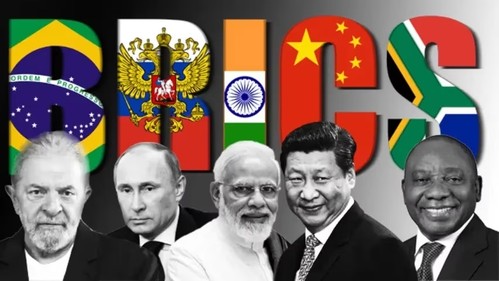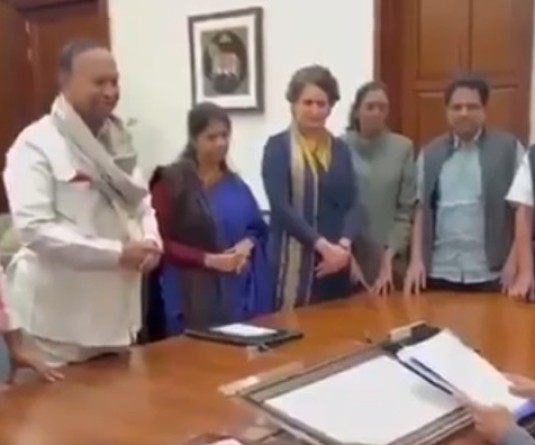IANS Photo

New Delhi, August 21 (IANS): Ahead of the summit of the five-nation grouping of Brazil, Russian, India, China, and South Africa (BRICS) this week, the wheels of military diplomacy between New Delhi and Beijing are whirring at a breakneck speed.
Before Prime Minister Narendra Modi and Chinese President Xi Jinping arrive in Johannesburg for the summit, corps commanders from India and China have had a lengthy two-day conversation about the formulations and mechanics of lowering tensions along the Line of Actual Control (LAC) in Eastern Ladakh. Significantly, this has been followed by meetings at Major General level to discuss old friction points in the Depsang plains. Clearly disengagement at the remaining knotty areas along the LAC, beamed since May 2020 following Chinese intrusions in these inhospitable heights seems on the radar.
In case a modus vivendi is achieved before the two principals arrive in South Africa, a meeting between PM Modi and President Xi would be possible, if not likely.
The military dialogue to discuss the nitty gritty of stabilising the LAC in Ladakh has followed two key meetings between Wang Yi, the head of the foreign affairs commission office of the Communist Party of China (CPC), now also the foreign minister, with National Security Advisor Ajit Doval and External Affairs Minister S. Jaishankar earlier. These conversations seem to have imparted the political impulse for a result-oriented dialogue at the military level ahead of the BRICS summit.
The run-up to BRICS, nevertheless, has trappings of déjà vu. In 2017, something similar had happened when 73 days Doklam crisis ended, yielding a BRICS summit in Xiamen, where PM Modi and President Xi met. Xiamen led to the Wuhan dialogue next year between the two leaders. The summitry ended with the Chennai meeting, before the relationship nosedived in the backdrop of the abrogation of Article 370, and Beijing’s second attempt to test India’s resolve of defending its borders.
For two reasons, the timing for a tactical thaw between New Delhi and Beijing appears appropriate. First, for China, a geo-economic realignment with India is now important, as Beijing’s export-led growth model has taken a big hit. In the post-Covid era when western economies have weakened, the demand for Chinese products has dropped significantly in North America and Europe. Besides, with mantra of de-risking echoing powerfully in western capitals, the movement of foreign capital into China has also entered a zone of uncertainty. In fact, capital outflow from China to other geographies including India, tagged with alternate supply chains, is on the radar.
Besides, with domestic consumption too plummeting, Chinese products need outlets to new markets as never before. For a country that is a master of cold calculations, it may not be a surprise that the CPC has decided to foster a big economic engagement with India. But this cannot happen unless there is a thaw at the borders in Ladakh. Gone are the days when the border and economy were de-coupled. The Chinese now know that hyphenation of the two domains is a new reality between the two Asian giants.
Second, there is big geopolitical dimension centred around Taiwan. The Chinse can no longer afford to ignore the cementing of ties between India and the United States, visible in plain sight during Prime Minister Modi’s high-octane visit to Washington, followed up by exceptionally high-profile outing to France. China can simply not afford Indo-US ties to gather further momentum, especially in view of the situation in Taiwan. In a worst-case scenario and given that the US cannot handover the Pacific to the Chinese, Washington may not hesitate to send troops to Taiwan in case the Chinese attacked the self-governing territory. What would be India’s response in case the world’s largest and second largest economy went to war? Would New Delhi only allow US logistical access invoking their logistical agreement, or, instead, consider opening a second front along LAC, however far-fetched that may seem to be the case right now?
China’s likely re-think on India, would be in tune with its shifting approach towards the United States. After initial hiccups, the political dialogue with the US starting with foreign secretary Antony Binken’s visit to Beijing is now in full flow. This is likely to culminate in a Xi-Joe Biden summit on the sidelines of the APEC this fall. In between Henry Kissinger one of the pioneers of diplomatic realism met Xi in Beijing. Kissinger has consistently advised US and Chinese administrations to bond with each other, with the subtext of breaching ties between Beijing and Moscow. A strategic partnership between Russia and China can virtually eliminate US influence in Eurasia—a region that defines the global balance of power as theorised by the guru of geopolitics, Halford John Mackinder.
From an Indian perspective, the reduction of tensions along the LAC, and a movement towards restoring the status quo ante would be a credible and satisfying achievement of the Modi government. An improvement of India-China ties in a multipolar world can also be leveraged to send a signal to the west that recent moves notwithstanding, India cannot be taken for granted, and New Delhi’s strategic autonomy, defining its rise as an independent great power is alive and kicking.
(The content is being carried under an arrangement with indianarrative.com)






